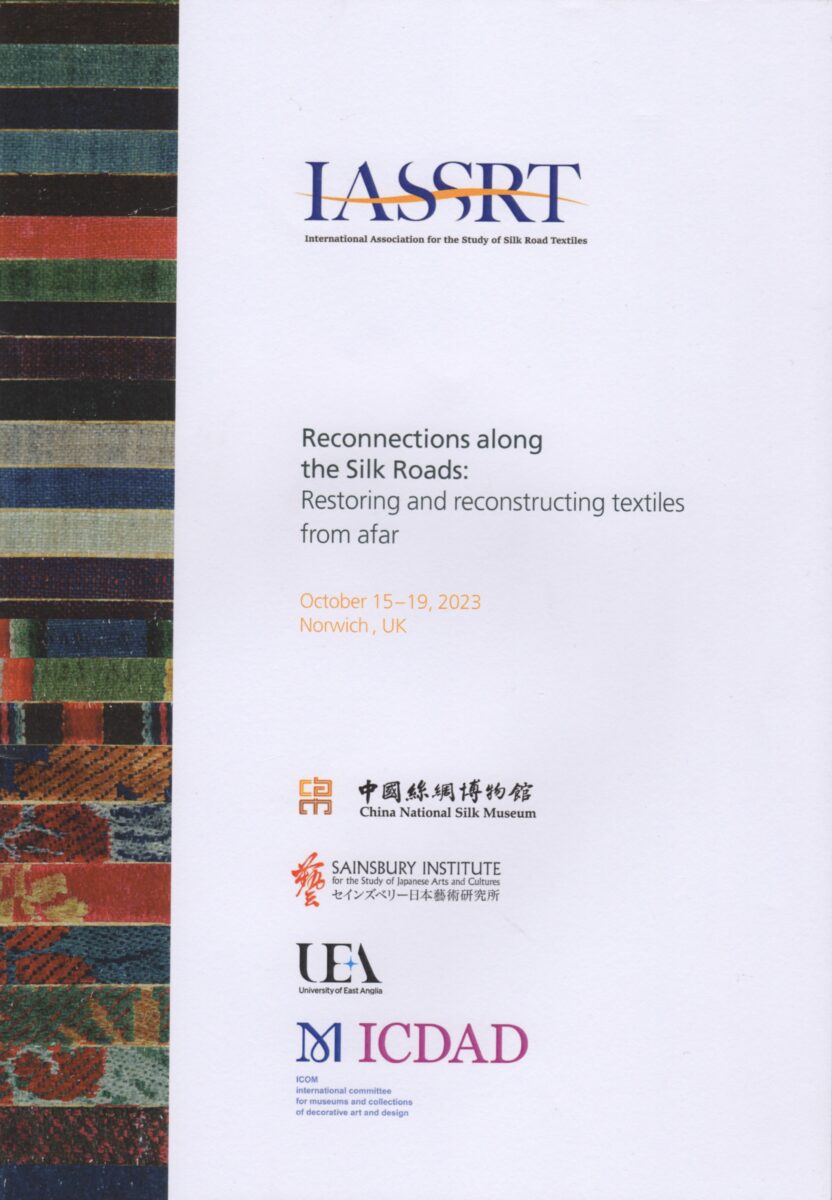University of East Anglia
A keynote lecture by Jorie Johnson for the 7th IASSRT symposium, delivered by Melissa Rinne, Senior Specialist at the Kyoto National Museum:
Rare Tang Dynasty Felt Rugs, Well Preserved Treasures of the Shōsō-in
Jorie Johnson (Artist, Independent Scholar, USA/Japan)
This study delves into a distinctive collection of Tang-dynasty felt rugs from the Shōsō-in Repository in Nara, now under the care of the Shōsō-in Office of Japan’s Imperial Household Agency. These remarkable felt artifacts, alongside other valuables at the Shōsō-in, were originally linked to Nara’s Tōdai-ji Temple.
Though these floral-patterned rugs predate 756 CE, their design techniques resemble contemporary Silk Road feltwork found in Turkey, Turkmenistan, Kazakhstan, and China. Skilled artisans in these regions employ similar methods.
Known in Japan as kasen 花氈, these textiles likely originated in China, possibly reaching Japan via the Korean Peninsula. Astonishingly thin, averaging 4-7 mm in thickness despite their size, these kasen were meticulously preserved, folded in wooden boxes, and stored 2 meters above ground in the repository’s North Section, cataloged as “North Section 150 patterned felt, rug nos. 1…31.”

Examining their colors, indigo hues remain vibrant, while red tones from sappanwood and madder dyes have faded to tan. Some designs incorporate yellow dye for green hues. Historical records mention thirty-one floral-patterned floor felts, but earlier sources suggest there may have been as many as sixty-seven. Unfortunately, information about their origins is scant, with vague references to “Central Asian or Chinese” production. Speculation arises from design similarities, existing records, Chinese tomb murals, and embedded seeds in the fibers. Certain rugs bear seal marks in cinnabar and ink-inscribed labels, some unreadable. Japan’s lack of sheep husbandry at the time raises questions about the wool source for these large felt rugs, as wool use in Japan began only in the late 1880s.
The author, a feltmaker and felt researcher, engaged in a concentrated study of these kasen at the Shōsō-in together with other researchers and then attempted to create technically accurate reproductions, which were put on view at the Nara National Museum during the 72nd Annual Exhibition of Shōsō-in Treasures, in 2020. This presentation will attempt to enhance understanding of the historical significance of these felt rugs, shedding light on their origins, preservation, and unique design techniques.
[Reference: https://shosoin.kunaicho.go.jp/api/bulletins/42/pdf/0425172176]



